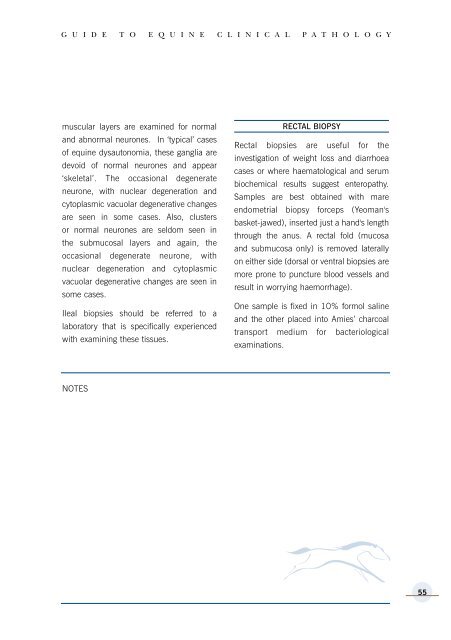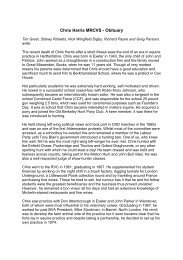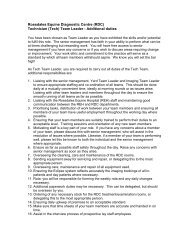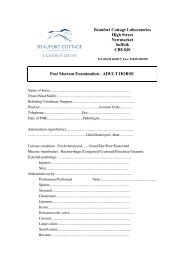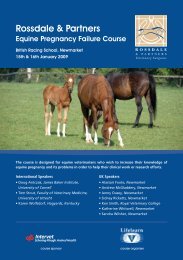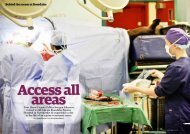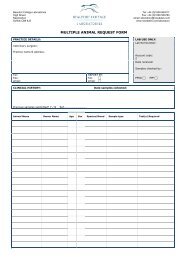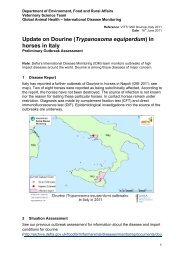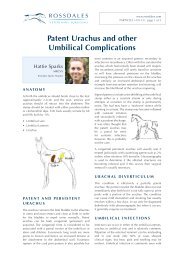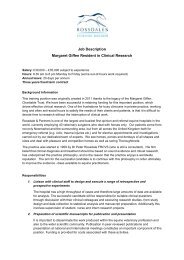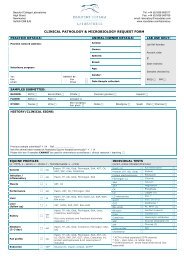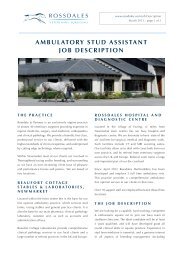EQUINE CLINICAL PATHOLOGY - Rossdale & Partners
EQUINE CLINICAL PATHOLOGY - Rossdale & Partners
EQUINE CLINICAL PATHOLOGY - Rossdale & Partners
You also want an ePaper? Increase the reach of your titles
YUMPU automatically turns print PDFs into web optimized ePapers that Google loves.
G u i d e t o e q u i n e c l i n i c a l p a t h o l o g y<br />
muscular layers are examined for normal<br />
and abnormal neurones. In ‘typical’ cases<br />
of equine dysautonomia, these ganglia are<br />
devoid of normal neurones and appear<br />
‘skeletal’. The occasional degenerate<br />
neurone, with nuclear degeneration and<br />
cytoplasmic vacuolar degenerative changes<br />
are seen in some cases. Also, clusters<br />
or normal neurones are seldom seen in<br />
the submucosal layers and again, the<br />
occasional degenerate neurone, with<br />
nuclear degeneration and cytoplasmic<br />
vacuolar degenerative changes are seen in<br />
some cases.<br />
Ileal biopsies should be referred to a<br />
laboratory that is specifically experienced<br />
with examining these tissues.<br />
Rectal biopsy<br />
Rectal biopsies are useful for the<br />
investigation of weight loss and diarrhoea<br />
cases or where haematological and serum<br />
biochemical results suggest enteropathy.<br />
Samples are best obtained with mare<br />
endometrial biopsy forceps (Yeoman's<br />
basket-jawed), inserted just a hand's length<br />
through the anus. A rectal fold (mucosa<br />
and submucosa only) is removed laterally<br />
on either side (dorsal or ventral biopsies are<br />
more prone to puncture blood vessels and<br />
result in worrying haemorrhage).<br />
One sample is fixed in 10% formol saline<br />
and the other placed into Amies’ charcoal<br />
transport medium for bacteriological<br />
examinations.<br />
NOTES<br />
55


